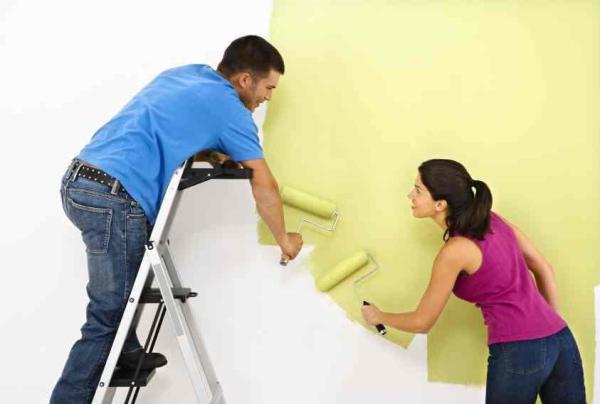
Not only are damp walls cause an aesthetic problem, but damp in walls can also be bad for a person’s health. If you notice damp on your walls, we recommend trying to get rid of this problem immediately. The first thing you should do is find out the source of this dampness and remove it. Once this is done, you can permanently cover the damp patch on your wall. But how?
For more about how to paint to stop damp on walls, keep reading here at oneHOWTO. Discover this effective but simple tips on painting over damp stains.
Check the underlying reason for your damp wall. Before you start painting decorating damp walls, you need to find and determine the cause of dampness. There are different types of causes behind damp walls including; filtration, condensation and capillarity. The origin of your damp walls:
- If damp is filtered, as can be for exhaust pipes, it is imperative to repair the fault to prevent damp. Thus, once the problem is solved and when the wall is completely dry, it is ready to be painted.
- At other times, damp is generated due to water intrusion from the outside and the best method in this case is to waterproof the wall using bituminous paint, which is ideal for creating a protective barrier against damp and prevent infiltration.

Check the humidity in your room. In most cases, a big wet spot in the wall appear, due to condensation of water vapor. This usually occurs in colder rooms, with little sun and a high degree of humidity. In this case, it is essential that you remove the stain so that you can later paint the wall for excellent results.
For more about humidity problems in the home, read:
- Tricks to remove humidity from your home.
- How to check the humidity level in your house.
When painting over damp stains, you will require damp seal paint. Check if the wet spot is dry or not. Once the stain is dry, paint the wall with a good breathable paint for damp walls or damp seal paint, which can be purchased at any specialized maintenance and home renovation store.

Check for mold. If instead the wet spot appears to have efflorescence or mold, they need to be removed. To do this you have two options:
- Use a diluted bleach solution and apply it to the stain with a cloth or soft brush.
- Apply hydrogen peroxide with a rag to remove fungi. When finished, rinse and leave the wall to dry so that the stain dries.
For more, read how to make a dehumidifier with rock salt.

Use chlorinated rubber, to continue the task of painting a damp wall. Apply chlorinated rubber paint to the stain. This is a great option for eradicating the problems of damp on the walls. This is a type of paint that is often used to paint pools, great for its powerful fungicide properties. Once you have applied the paint on the stain, leave it to dry for 15-20 minutes and proceed to paint the wall with standard plastic paint.
Make sure you cover the entire room. Remember to paint the wall well, start by painting the corners, edges of sockets and switches, door frames and windows with a brush. Then you can move onto painting the rest of the surface with a roller to achieve a clean finish.
By implementing all these tricks for painting a damp wall you can fix your damp in the room problem once and for all.
If you want to read similar articles to How to Paint a Damp Wall, we recommend you visit our Interior Design and Decor category.